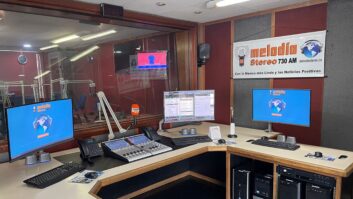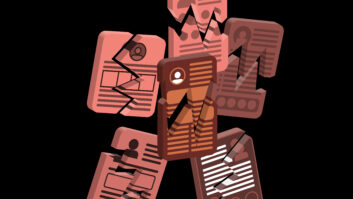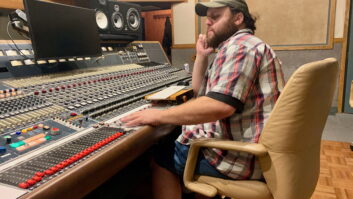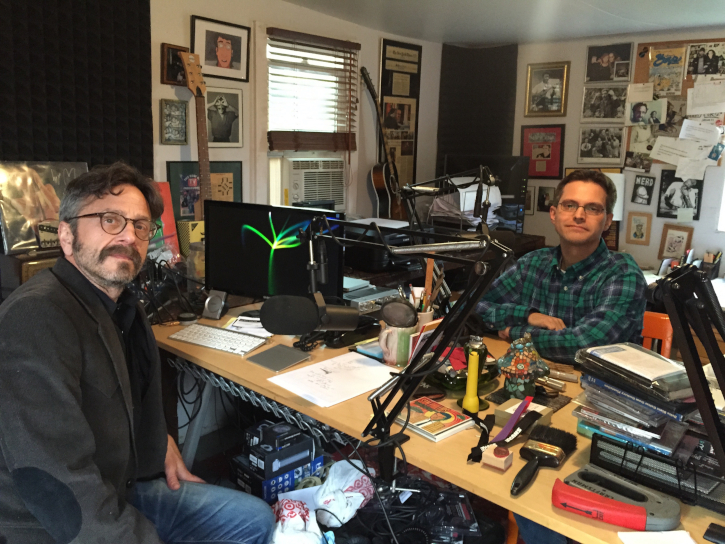
When the popular podcast “WTF with Marc Maron” (www.wtfpod.com) debuted 11 years ago, the iPhone was only on its third iteration and couldn’t muster downloads larger than 20 MB.
That’s an important fact in understanding the evolution of podcasting fidelity from tinny and flangey in the early ’00s, as the podcast’s producer Brendan McDonald describes, to the comparatively crystalline audio available from podcasts today.
“When podcasts were a fairly young medium, there were a lot of data concerns about them from users,” says McDonald, “people with early data plans or devices that did not hold particularly a large amount of data and did not have cloud storage plans yet. So, you had to be very mindful.”
[Read: True Crime Sound Design on “Anatomy of Murder”]
As MP3 compression technology progressed and the show upgraded to a server whose bitrate was 128 kbps, he found some listeners still preferred the original 22.05 kHz mono file, which was 32-bit at a constant 40 kbps.
Those longtime listeners can still find that format on the podcast’s website, while podcatchers and platforms like Spotify get a modern formatted file.
“I was like, if the default setting is [128 kbps] and I’m compressing down, [then] we’re getting like a VHS copy of a copy here,” he says. “Now we’re using a more standard, almost stereo MP3 style setting of 44.1 [kHz] stereo, 16-bit and 128 kbps — which is a much bigger file, but in the style that people are generally listening to podcasts now.”
No Pretense
McDonald has been with “WTF with Marc Maron” for all 1,200-plus episodes, and worked with the host in terrestrial radio in New York and Los Angeles before transitioning to the podcast format.
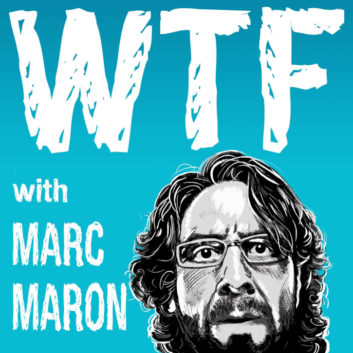 While he can hear improvements in the quality of the show and audio over that time period, the equipment he used to get the show to today has changed very little.
While he can hear improvements in the quality of the show and audio over that time period, the equipment he used to get the show to today has changed very little.
Maron, in his home studio, still tracks with a Shure SM7 microphone and a Samson MDR6 tabletop mixer with GarageBand. McDonald edits in Adobe Audition, the latest version of what was once known as Cool Edit he used in the show’s earliest days.
The only measurable changes to the show’s production, in fact, came with COVID-19. Maron and McDonald had to ease off their policy of only taping interviews in person, but maintaining the easy, conversational vibe that comes from conducting face-to-face interviews was a top priority during the upheaval of 2020.
“These interviews, and this show in general, really connect with people because the conversations feel so intimate,” says McDonald. “Marc, over the course of a decade, has gotten very good at that — basically creating an environment for people to feel like they’re comfortable and they can share with him. It doesn’t have a lot of pretense, it doesn’t have a lot of roadblocks to actual conversation, as opposed to feeling like it’s stilted or a list of Q&A. He wanted it to be personal; he wanted it to feel like two people connecting. And so that was really important to us.”
[See Other Interesting Features From Jim Beaugez]
Social distancing protocols meant that videoconferencing became a necessity. For interviews in which the subject has a home recording setup, McDonald is able to get a tape sync recording, but most audio now comes through Zoom with the Audio Hijack extraction tool by Rogue Amoeba (www.rogueamoeba.com) added to the mix. In the software’s Voice Chat mode, McDonald can select Skype, Zoom or another videoconferencing platform as the audio source and tweak the audio on the fly while Maron conducts the interview.
“It’s actually brought me back to my early days of live radio production, in that now I can actually sit on the live call with Marc and I can tinker with the sound if I need to,” he says. “It’s been more work in the last year, but we’ve been able to make it work and largely have been very satisfied with the way things have sounded.”
